Bekkou Sushi: Spicy Marinated Fish from Izu Islands
Dec 20,2018
Bekkou Sushi: Spicy Marinated Fish from Izu Islands
Dec 20,2018
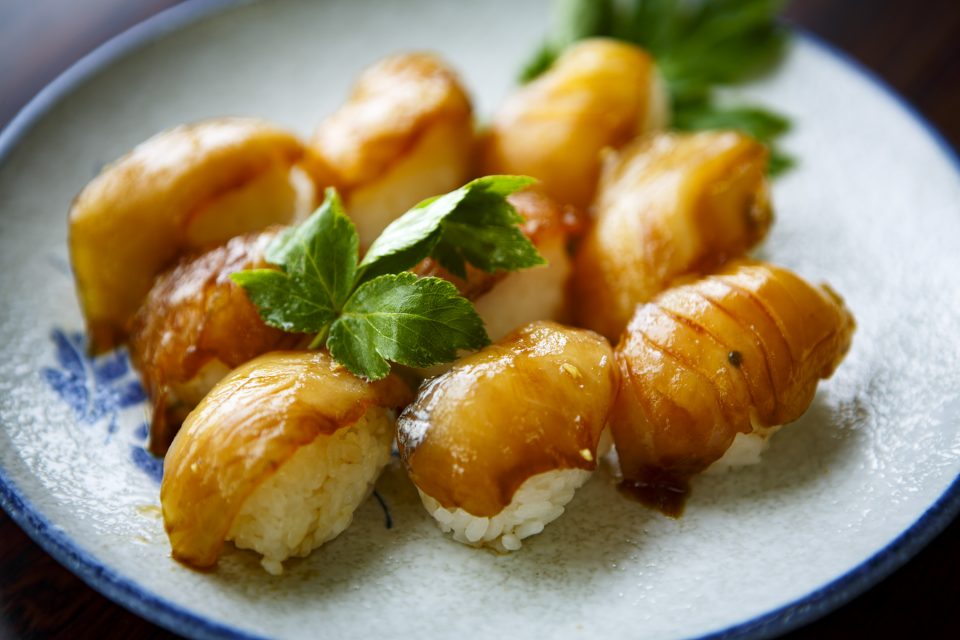

Amber-colored sashimi glistens on rice. It’s a sight that tempts even the most discerning foodie. The name of this dish that we discovered on Izu Ohshima is bekkou [amber-colored] sushi. In this third installment of our ongoing series, we delve into the charms of bekkou sushi, a local delicacy deeply rooted in Izu Ohshima.
▶What Is Kusaya? Discover the Fermented Power of Kusaya Brine
“If you come to Izu Ohshima, you have to try bekkou sushi.”
On our first visit to Izu Ohshima, we ate bekkou sushi at a sushi restaurant. The bekkou sushi, beautifully arranged on a wooden platter, was so gorgeous it looked suitable for a feast. The glazed hand-pressed sushi fills your mouth with the flavor of soy sauce, the fragrance of green chilies, and a light spiciness. We ate each piece reverently, while craving saké the whole time. It was so delicious that we purchased some green-chili soy sauce as a souvenir. Later at home, while indulging in an Izu Ohshima mood, a thought occurs: Is bekkou sushi only eaten at sushi restaurants, or do people have it at home?
Almost as soon as we started researching, wherever we asked, people replied that they make bekkou sushi at home all the time. Some even listed the green chilies and soy sauce and other seasonings they use. With each reply, our curiosity heightened.
The first person to make bekkou sushi for us was Mochizuki Misao, the proprietress of the Hachiman-So guest house and its associated Shusaku Maru recreational fishing craft that is available for fishing tours. She is known for how briskly she manages her dizzyingly busy schedule, from guiding anglers to taking care of guests and cooking for them.
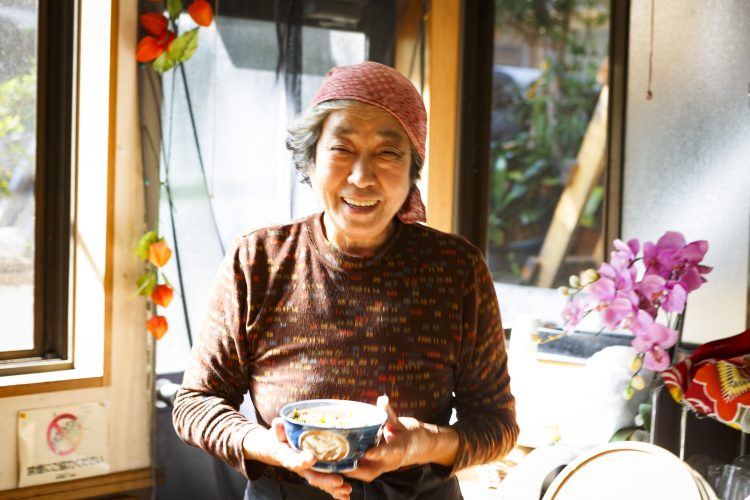
Mochizuki Misao, proprietress of the Shusaku Maru recreational fishing boat and the Hachiman-So guest house. She is well known for her cooking prowess.
“You must be hungry, right? Look, it’s all ready for you.” As soon as we arrive, bekkou-don [a bowl of bekkou on rice] appears in front of us.
“I normally make bekkou-don more often than bekkou sushi. My go-to is to make a base layer of island seaweed and put the marinated sashimi on it. Then I top it with minced mackerel.” When we asked, we discovered that the minced mackerel is homemade.
“We catch a lot of mackerel around here. I remove the head and entrails, boil the whole fish, wash it, take out the bones, flake the meat a little, season it, and let it dry. I color it with just a tiny bit of red food coloring. Because the more beautiful the color, the better it tastes, right.”
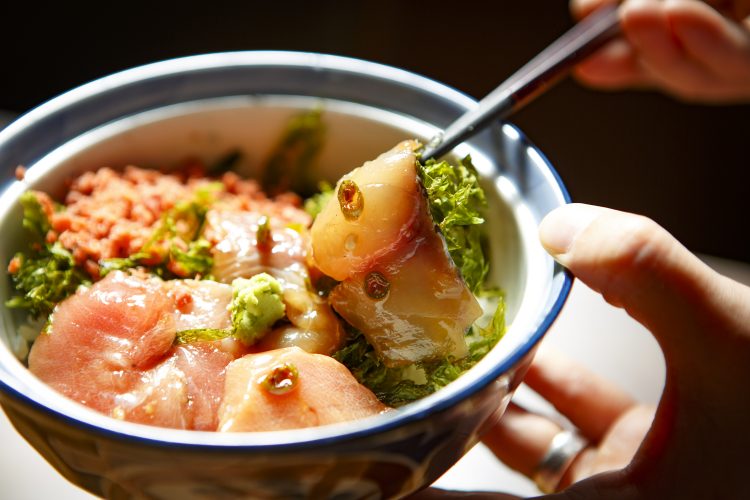
Mochizuki’s bekkou-don is gorgeous. The flavor of the island seaweed provides a nice accent.
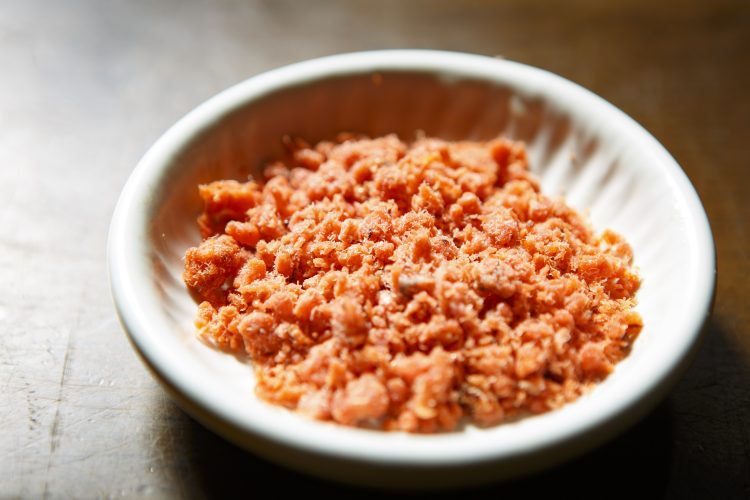
A dash of red food coloring really brings out the color of the handmade minced mackerel, which has a slight sweet and nostalgic taste
As you would expect from the proprietress of a fishing craft and guest house, her deep love for fish cuisine comes across in spades. On tasting the bekkou-don, we notice a slight sweetness that goes well with the comforting flavor. The flavor of the island seaweed from the nearby sea and the sweetness of the minced mackerel accent the mildly spicy soy-sauce flavor. With each mouthful, the taste evolves, driving you on to eat the next piece and then the next.
Mochizuki informs us that the sauce consists of soy sauce, dashi stock, and saké. She mixes chopped green chilies in with the sauce and thoroughly coats the sauce on the sashimi. She then places the sashimi on a bed of sushi rice sprinkled with island seaweed and finishes the dish off with minced mackerel, which she always has on hand, and wasabi. The recipe is so simple you can remember it without writing it down.
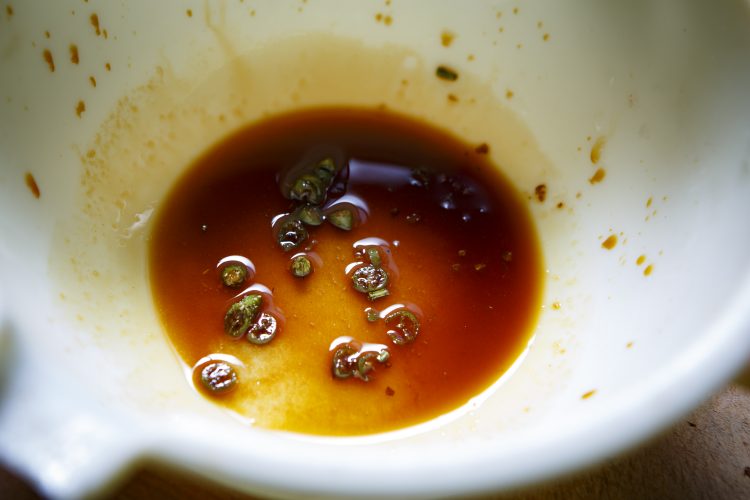
Adding a little dashi stock is Mochizuki’s style. It moderates the spiciness for a milder taste.
“No one taught me this recipe. I watched my grandmother make it, I ate it, and I just naturally began to make it myself. My grandmother’s bekkou-don had two layers! She would stuff island seaweed and chicken grunt or golden eye snapper sashimi in between the layers of sushi rice. You wouldn’t believe how extravagant it was on days when we caught a lot of fish.”
Mochizuki, who hails from far-off Aomori, came to the island when she married. We asked if she had any problems adjusting because of the different food culture and seasonings. “I had always loved fish, so I had no problems at all. I even found kusaya to be delicious and it soon became a favorite of mine,” she says with a laugh. “Every January 15, they have a festival at the Hachiman Shrine near here. I always make loads of bekkou sushi, not bekkou-don, for it. This is a tradition that’s been passed down since my grandmother’s time.”
Sitting around glistening bekkou sushi, drinking saké, and chatting away… It was easy for us to picture the lively festival scenes. Bekkou sushi is slightly different from the casualness of bekkou-don, adding a little formality. The openness and splendor of bekkou sushi likely stem from the fact that it is served at both celebrations and everyday occasions.
The next bekkou sushi we had was prepared for us by Kawanishi Akiyo and Okiyama Aiko, two good friends, who work at Hama no Kaa-chan Meshi, a restaurant near the Port of Okata, Izu Ohshima’s main dock for fishing vessels.
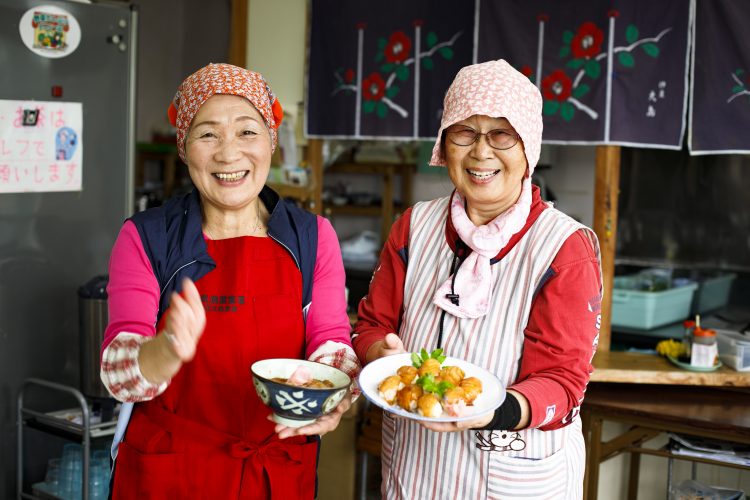
Kawanishi Akiyo (left) and Okiyama Aiko. You can meet them at Hama no Kaa-chan Meshi, near the Port of Okata.
“You really need green chilies for bekkou sushi. Do you want to compare them with red chilies?” What we were shown were cute chili peppers about two to three centimeters in length and quite different from the long, thin green peppers found in Kanto suburban supermarkets. They are the same variety of island chili peppers grown in Okinawa and other islands, but on Izu Ohshima, the green ones are called aotou before they ripen. We took a small nibble of the red and green island peppers we were offered, and both were quite spicy. What was clearly different was the aroma. The green chilies have a more refreshing and pleasant aroma that lingers in the mouth.
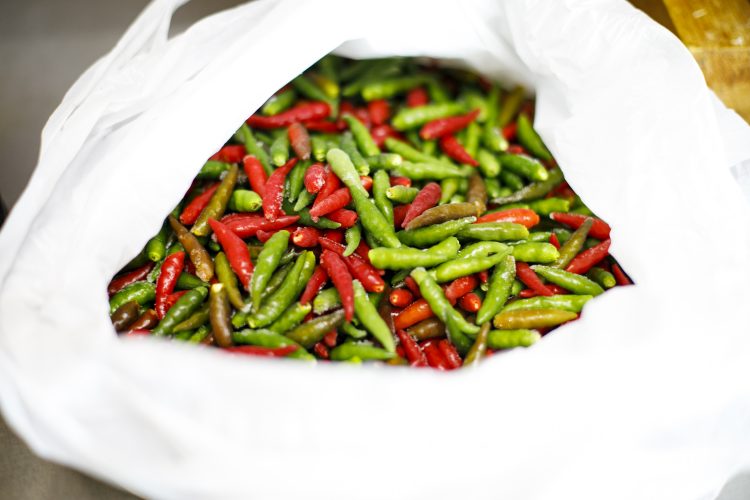
A freezer full of island peppers. The freezer is essential for enjoying delicious bekkou sushi year round.
Kawanishi and Okiyama speak in unison when they claim they can’t begin without aotou. It’s true that green chilies are in season only from summer into the fall. We wondered whether they could be preserved by marinating them in a soy sauce-based sauce after being harvested in season for use year round.
“Aotou will lose their aroma if marinated in some kind of seasoning. When they are to be eaten, we chop them up and use them right away. So we freeze them like you can see here. Freezing preserves their aroma, so they can be used anytime.”
Most homes on Izu Ohshima always have some aotou on standby in their freezers. This is so they can enjoy bekkou sushi with the spiciness and fragrance of aotou anytime they have sashimi available.
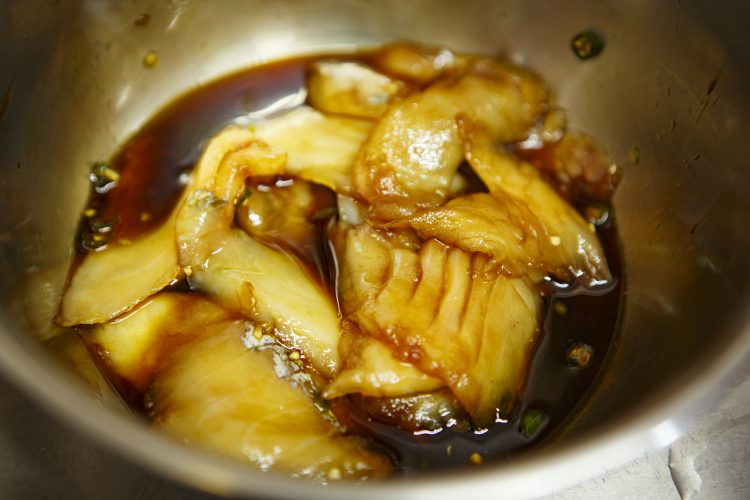
Marinating the fish for a few minutes while preparing the rice is sufficient. Marinating for too long will cause the fish to become tough.
“It tastes better when you make it in a jiffy. Some people add a sweetener, but I just use soy sauce and saké. Sometimes I’ll add a tiny bit of wasabi,” explains Kawanishi. Okiyama adds: “I also season bekkou with soy sauce and saké. I form it into sushi for celebrations or special occasions. But ordinarily I make bekkou-don.”
Bekkou is easy to make, but the pair don’t cut corners and are particular about the appearance too. For coloring, they may add some ashitaba herbal leaves or light pink ginger. For the sashimi itself, they say they use whatever is left over, but have a strong preference for white fish, which they cut thinly. White fish brings out more of the beautiful bekkou color.
“Today’s fish is Japanese butterfish. It’s a fish with white meat caught locally. You said you like it spicy, so I added extra aotou just for you.” Exactly as we were told, the bekkou sushi and bekkou-don they whipped up in a jiffy were delicious just as is. The aroma of the aotou and soy sauce came through pure and authentic.
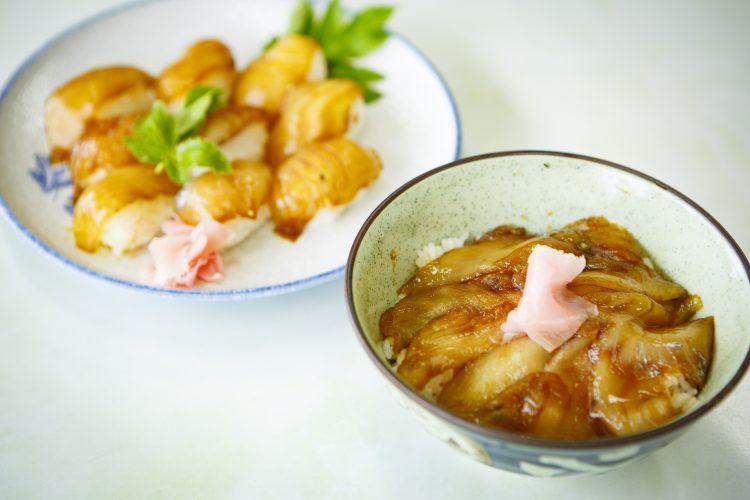
The presentation was also beautifully done. The Japanese butterfish used on the day of our visit is a large fish, at over 60 centimeters long. This variety is caught year round in the waters near Izu Ohshima.
Despite its unadorned nature, we never got tired of bekkou sushi no matter how many times we had it. We felt like we could keep on eating it forever. It is prepared quickly and makes it to the table in a flash, but after that, time passes by slowly. Sitting at a table around bekkou sushi gives an odd sense of comfort, as the laid-back island vibe merges with whimsy, much like Edoites grabbing a quick sushi for lunch.
Other Izu islands have local dishes similar to bekkou sushi. Among them, Hachijojima’s shima [island] sushi is particularly well-known. It features sweet soy sauce-marinated white fish sashimi, such as Japanese butterfish, golden eye snapper, and greater amberjack caught in nearby waters, placed on top of vinegared rice, and topped with Japanese hot mustard. As with green chili peppers on Izu Ohshima, people say the dish isn’t complete without Japanese hot mustard.
The first bonito of the season; without karashi; brings tears. (Karashi is Japanese hot mustard.) This haiku verse is attributed to Ikushima Shingoro, a popular kabuki actor exiled to Miyakejima during the Genroku period (1688 to 1704) because of a major love scandal in the inner palace. It was reportedly written to Ichikawa Danjuro II. In Edo, it was considered stylish to eat the first bonito of the season dipped in karashi-infused soy sauce, spawning the haiku verse we still have today — The first bonito of the season; makes you cry twice; once from the karashi, once from the price. At the time, both the first bonito of the season and karashi were very expensive. The haiku captures this with self-deprecating humor, as splurging on this treat would make people tear up twice from the formidable price and the spiciness of the karashi. The Edoites’ obsession with food shines through with charm in this haiku. Remnants of Edoites’ former passion for karashi and the first bonito of the season may have spread to parts of the Izu Islands at some point and still persist today. Perhaps the karashi of the Edoites transformed into the green chilies on Izu Ohshima. It’s fun to let your imagination run wild.
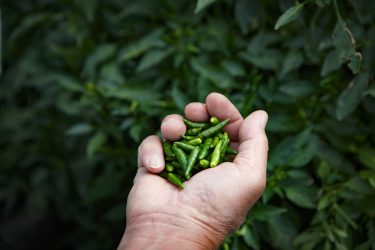

The green chilies used by Kawanishi and Okiyama were grown without pesticides by Koike Koji. He says confidently that he will protect the island’s food culture.
We became eager to learn about the origins and history of bekkou sushi and shima sushi. We were unable to obtain any firm information even after consulting scholarly books on sushi or asking around at tourism offices. And even when speaking with the three women who made bekkou sushi for us and other women we met on Izu Ohshima, the conversations went like this.
“Karashi or wasabi? On Hachijojima, they definitely use karashi, but we don’t here.”
“Everyone, for sure, uses green chilies, but whether they add wasabi depends on the person.”
“Seasonings? Well, some people add sweeteners and some don’t. It depends on the family.”
“No one taught me how to make it. I just found myself one day making it.” (laughs)
Bekkou sushi is casual and has a certain ambiguity to it. The only rule seems to be to use green chilies. We were surprised at how many people didn’t care about the details. We suspect it’s something like a folk tale that’s been passed down through oral tradition and experience. At its core is the depths of local cuisine. The green chili peppers grown on Izu Ohshima are the unsung heroes that support bekkou sushi. Chop them finely, marinate briefly, and they add a spicy, glossy finish to sashimi. In this sense, bekkou sushi is a very fitting name.
▶What Is Kusaya? Discover the Fermented Power of Kusaya Brine
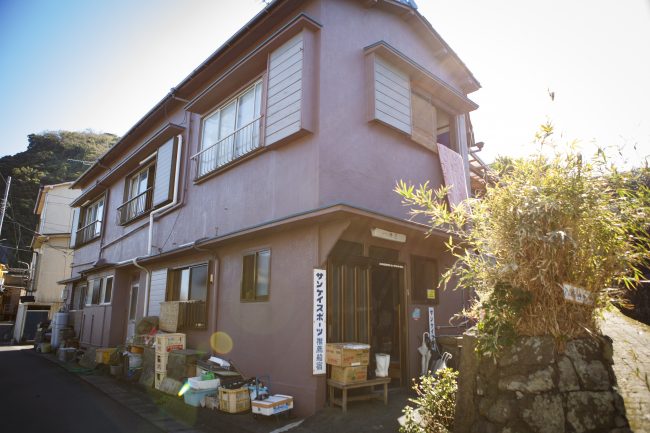
Note: Inquire ahead of time about accommodations and fishing boat tours
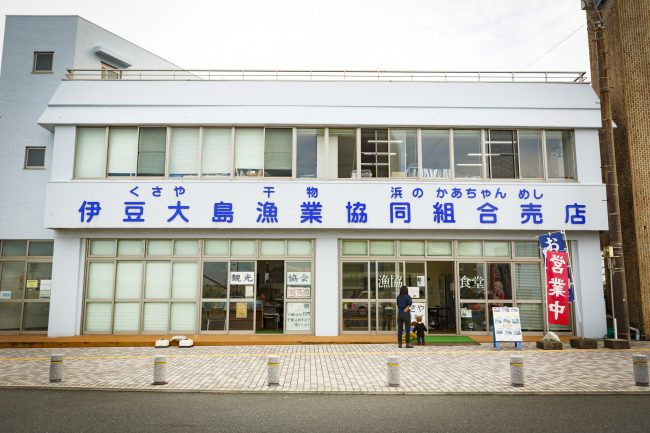
●Getting to Izu Ohshima
Getting to Izu Ohshima takes an hour and 45 minutes by high-speed jet ferry or six hours by overnight ferry from Tokyo’s Takeshiba Sanbashi Pier. There are also ferry services from Kurihama Port in Kanagawa and Atami Port and Ito Port in Shizuoka.
Contact Tokai Kisen at 03-5472-9999 or 0570-005710
URL:https://www.tokaikisen.co.jp/